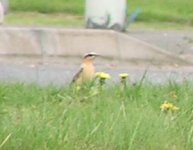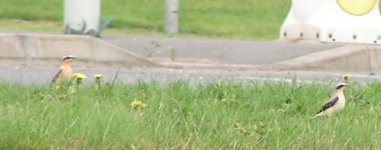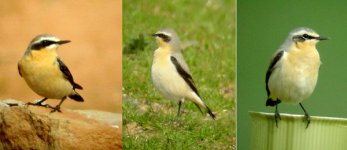Lucky Birder
Notts Birder
I have two birds here today. One which is quite plump and rather upright and long-legged. It has a whacking brilliant white supercillium that is thicker than the other bird, which is a 'classic' ordinary Northern. The only thing that worries me, is that the peachy tone on the underparts is limited to the throat. Isn't the colour meant to extend further down the breast? Otherwise I would say it is a Greenland.
I will upload the photos tonight, but it might just be a well-marked oenanthe
Anyone got any sure fire way of separating the Greenland from 'ordinary' Northern Wheatear.
- LB
I will upload the photos tonight, but it might just be a well-marked oenanthe
Anyone got any sure fire way of separating the Greenland from 'ordinary' Northern Wheatear.
- LB







